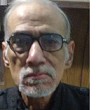Official source of use of "satyamev jayate"
 Swami Sadashiva Brahmendra Sar
(Querist) 04 March 2012
This query is : Resolved
Swami Sadashiva Brahmendra Sar
(Querist) 04 March 2012
This query is : Resolved
Dear learned friends,
"Satyamev jayate" (सत्यमेव जयते) is our national slogan which is visible in all court rooms. The Supreme Court on its official web site uses the slogan "Yato dharmastato jayah" (यतो धर्मस्ततो जय:).
I am searching the official source i.e. the Act / Resolution / Notification / GO etc. by which these phrases were adopted by the Government of India and the Supreme Court.
Kindly help me and oblige. Thanks in advance.

Guest
(Expert) 04 March 2012
Dear Dr. Tripathi,
The script "Satyameva Jayate" is inscribed below the National Emblem, itself, which has also been adopted as India's motto and is used in the courts of India, but no separate Act seems to have been framed so far particularly for the use or non-use of the said script independently.
As about "Yato dharmastato jayah" It is a famous saying of Vyasa in his Maha Bharata. When and how adopted by some of the organisations, including the SC, is yet to be found out. May be available on history records of the SC. For Example, AP University of Law also uses this script in their emblem.
 Shonee Kapoor
(Expert) 04 March 2012
Shonee Kapoor
(Expert) 04 March 2012
See the same @ http://en.wikipedia.org/wiki/Satyameva_Jayate
Also:
http://164.100.47.5/book2/reports/home_aff/116threport.htm
It might have relevant information.
Regards,
Shonee Kapoor
harassed.by.498a@gmail.com
 Nadeem Qureshi
(Expert) 04 March 2012
Nadeem Qureshi
(Expert) 04 March 2012
Dear Mr. Tripathi
read it.
"Satyameva Jayate" (satyam-eva jayate सत्यमेव जयते) (Literally: "Truth Stands Invincible") is a Hindu mantra from the ancient scripture Mundaka Upanishad.[1] Upon independence of India, it was adopted as the national motto of India.[2] It is inscribed in Devanagari script at the base of the national emblem. The emblem and words 'Satyameva Jayate' are inscribed on one side of all Indian currency. The emblem is an adaptation of the Lion Capital of Asoka which was erected around 250 BC at Sarnath, near Varanasi in the north Indian state of Uttar Pradesh, but does not contain the motto. The origin of the motto is a well-known mantra 3.1.6 from the Mundaka Upanishad.[2] The full mantra as follows:
satyameva jayate nānṛtaṁ
satyena panthā vitato devayānaḥ |
yenākramantyṛṣayo hyāptakāmā
yatra tat satyasya paramaṁ nidhānam ||[3]
In Devanāgarī:
सत्यमेव जयते नानृतम् सत्येन पन्था विततो देवयानः ।
येनाक्रमन्त्यृषयो ह्यात्मकामो यत्र तत् सत्यस्य परमं निधानं ॥
Meaning:
Truth alone triumphs; not falsehood.
Through truth the divine path is spread out by which
the sages whose desires have been completely fulfilled,
reach where that supreme treasure of Truth resides.[4]
Popular connotations also include:
'Truth stands Invincible'
'Truth alone triumphs'
'Truth alone conquers, not falsehood'
'The true prevails, not the untrue' [5]
'Truth alone conquers, not untruth' [6]
'Truth Alone Triumphs, not(na) that against(ana) Sacred law(Rta)
The motto of the Czech Republic and its predecessor Czechoslovakia, "Pravda vítězí" ("Truth Prevails") has a similar meaning.
 Raj Kumar Makkad
(Expert) 04 March 2012
Raj Kumar Makkad
(Expert) 04 March 2012
I think your query which you are repeatedly posting on this site since last many days should have been resolved now.
 Swami Sadashiva Brahmendra Sar
(Querist) 05 March 2012
Swami Sadashiva Brahmendra Sar
(Querist) 05 March 2012
Dear raj kumar ji ,
query is not resolved yet. I want to study the discussion and resolution on both mottoes. I am curious to know the reason or philosophy behind the use of motto यतो धर्मस्ततो जय: instead of सत्यमेव जयते by the supreme court on it's website. I could not find exact information from National Emblem Act or Wikipedia about resolution and date of adoption of the mottoes.
I think there must be a resolution and notification by the supreme court before using the phrase यतो धर्मस्ततो जय:.
 Swami Sadashiva Brahmendra Sar
(Querist) 05 March 2012
Swami Sadashiva Brahmendra Sar
(Querist) 05 March 2012
Further, can there be special significance of terms "Satya" and "Dharma" in the context of powers and jurisdictions of other courts vis-a-vis the Supreme Court especially in the light of Art. 142 of the Constitution.
 prabhakar singh
(Expert) 08 March 2012
prabhakar singh
(Expert) 08 March 2012
I would like to know from you after you get it.
 Swami Sadashiva Brahmendra Sar
(Querist) 08 March 2012
Swami Sadashiva Brahmendra Sar
(Querist) 08 March 2012
Respected Shri Prabhakar Singh ji,
In this regard an application under RTI Act is likely to be moved in Supreme Court after Holi vacation. I will post the information here as soon as it is received.
 Swami Sadashiva Brahmendra Sar
(Querist) 18 June 2012
Swami Sadashiva Brahmendra Sar
(Querist) 18 June 2012
The CPIO replied that no such order is available.
Appeal not decided by First Appellate Authority within statutory period.
Now second appeal has been filed before the CIC.
 Guest
(Expert) 04 March 2012
Guest
(Expert) 04 March 2012
